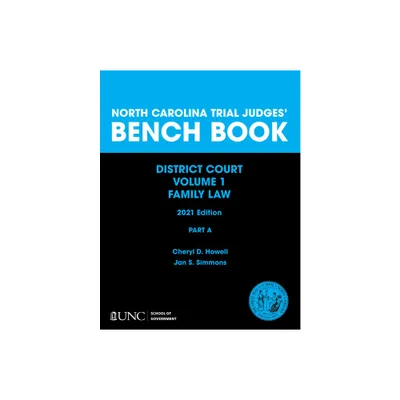Home
The Appointment Process for U.S. Circuit and District Court Nominations: An Overview
Loading Inventory...
Barnes and Noble
The Appointment Process for U.S. Circuit and District Court Nominations: An Overview
Current price: $19.95


Barnes and Noble
The Appointment Process for U.S. Circuit and District Court Nominations: An Overview
Current price: $19.95
Loading Inventory...
Size: OS
*Product Information may vary - to confirm product availability, pricing, and additional information please contact Barnes and Noble
In recent decades, the process for appointing judges to the U.S. circuit courts of appeals and the U.S. district courts has been of continuing Senate interest. The responsibility for making these appointments is shared by the President and the Senate. Pursuant to the Constitution's Appointments Clause, the President nominates persons to fill federal judgeships, with the appointment of each nominee also requiring Senate confirmation. Although not mentioned in the Constitution, an important role is also played midway in the appointment process by the Senate Judiciary Committee. The need for a President to make a circuit or district court nomination typically arises when a judgeship becomes or soon will become vacant. With almost no formal restrictions on whom the President may consider, an informal requirement is that judicial candidates are expected to meet a high standard of professional qualification. By custom, candidates who the President considers for district judgeships are typically identified by home state Senators if the latter are of the President's party, with such Senators, however, generally exerting less influence over the selection of circuit nominees. Another customary expectation is that the Administration, before the President selects a nominee, will consult both home state Senators, regardless of their party, to determine the acceptability to them of the candidate under consideration. In recent Administrations, the pre-nomination evaluation of judicial candidates has been performed jointly by staff in the White House Counsel's Office and the Department of Justice. Candidate finalists also undergo a confidential background investigation by the FBI and an independent evaluation by a committee of the American Bar Association. The selection process is completed when the President, approving of a candidate, signs a nomination message, which is then sent to the Senate. Once received by the Senate, the judicial nomination is referred to the Judiciary Committee, where professional staff initiate their own investigation into the nominee's background and qualifications. Also, during this pre-hearing phase, the committee, through its "blue slip" procedure, seeks the assessment of home state Senators regarding whether they approve having the committee consider and take action on the nominee. Next in the process is the confirmation hearing, where judicial nominees engage in a question and answer session with members of the Judiciary Committee. Questions from Senators may focus, among other things, on a nominee's qualifications, understanding of how to interpret the law, previous experiences, and the role of judges.


















